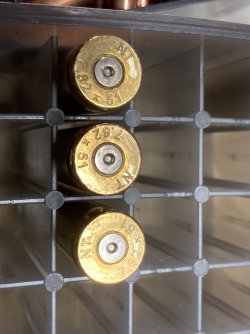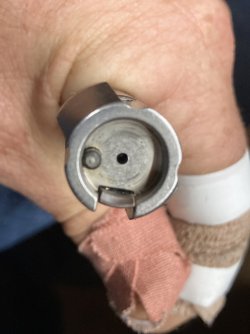There are a lot of mistaken ideas at play here, so I'm going to give you some things to think about, and correct some false information.
Let's pretend you got the load info from Nosler, for the example.
-Do they list the lot number they tested? No.
-Do they list the date it was tested? No.
-Do they disclose if it was in fact just estimated and bit pressure tested? No.
-Did they remind you that from a sealed container, powder will gain and lose moisture, and effect your powders burning rate? No.
This often comes from a hilariously obvious math error, which took QL the better part of a decade to correct. And unfortunately for the general masses, was perpetuated by Berger for make years, before they actually began pressure testing. Guess how they estimated pressure....

In fact longer OAL will increase pressure, not the other way around. This pressure tested work was originally done by Dr. Brownell long ago.
The inconvenient truth of the matter, is that since the 1960's when the folks at the Sherman arsenal fired almost a half million rounds chasing a dropped primer issue. There isn't such a thing as XX brass has more or less capacity, nor does it magically effect pressure in anything like a linear manor. If your brass was all from a single lot, it will still have been made on at least a dozen different machines, all with different states of tooling wear; resulting in different case capacities.
Every combination(case, powder, bullet) will have a pressure range where the powder behaves reasonably well. When you're at the low or high side, things become much less predictable. For ease of explanation, think of it acting in a library fashion. Because you're loading at the top end, it isn't going to be a linear response to changes effecting pressure. Meaning of you did something you expected to change 1,000 psi, your change could very well actually be 6,000 psi. This is why SAAMI spends a great deal of time explaining standard deviations, and how much difference there is with honest sample sizing.
If you aren't measuring velocity, then you aren't honestly trying to find a pressure limit. If you want to know what your pressure is, then the only way to do so is to measure it.
The next best method, which is certainly not without some potentially serious problems, is to measure velocity from the beginning.
Despite those who still pray to the charlatans alter of Ackley, brass doesn't magically know what SAAMI MAP is for any cartridge. Which means it isn't going to gleefully accurately inform you when you reach it. There are A LOT of variables, and I can't over stress that part; but for really broad brush strokes:
In all of my actual pressure testing with equipment calibrated to SAAMI reference ammo, with a firearm having reasonably tight tolerances. Most brass will begin to show "signs", when you are approaching the lower end of proof pressure, or upper 70,000 psi range.
To your photo:
Yes it looks like the ejector is wiping the case head. I would pull it apart and clean it, to ensure it can easily and properly fit flush with the bolt face.


